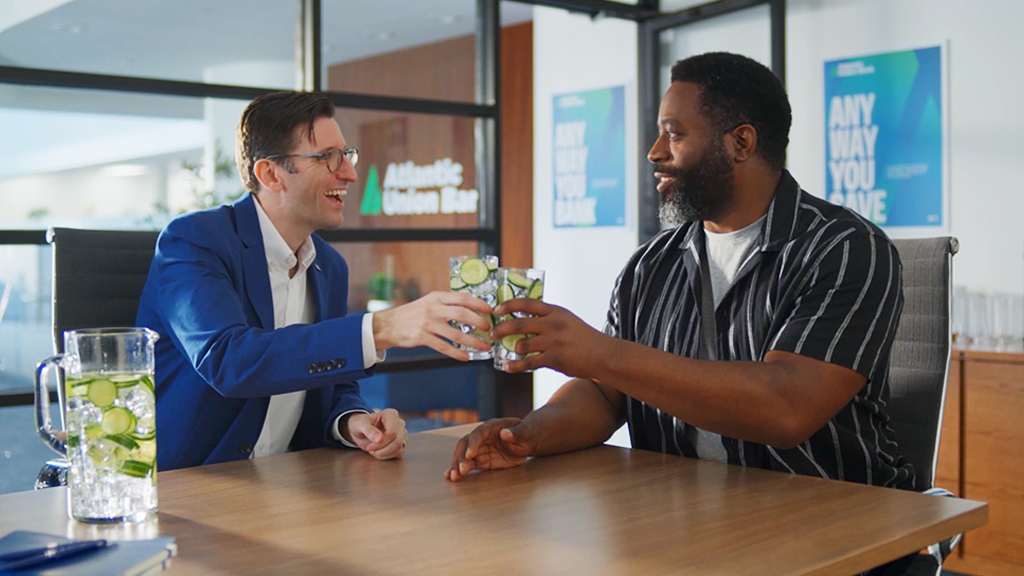
Sub-Brand Like a Boss: How to Stand Out and Find Your Unique Brand Voice
By: Elaine Luzietti
It's not news that brand differentiation is crucial for success in a cacophonous market. Capturing consumer attention takes more than a standout logo or tagline; it requires the development of a distinct identity and thoughtful execution through each touchpoint. Sub-brands enjoy the added difficulty of establishing a unique voice and point of view while driving the umbrella narrative of their parent brand. But their power in a brand hierarchy is formidable, and, if done correctly, can allow for meaningful and unparalleled growth among diverse audiences and markets.
The Importance of Sub-Branding: Why sub-brands inspire more loyalty and love from consumers
Individualization, customization, and specialization are becoming increasingly expected across industries. As technology continues to evolve and consumer behavior becomes increasingly trackable, measurable, and predictable, brands must address specific target markets or offer niche products or services to stay competitive and relevant — enter, sub-brands.

Sub-brands can segment an audience even further, allowing for more targeted engagement efforts and more memorable moments for the consumer; they can focus on solving a specific problem or fulfilling a unique market need. And ultimately, they can often garner more brand love and loyalty than their parent brand. Take Jeep, for example — especially the Wranglers — here’s a sub brand with a cult-like following that has inspired a consumer camaraderie that has evolved and taken on a life of its own.
From the iconic Jeep wave, to the latest sign of solidarity and fun with “Jeep ducking,” the sub-brand has more than honored Chrysler’s purpose — “To create the type of exciting, efficient, reliable, safe vehicles you expect and deserve.” — it’s taken on a life of its own and crossed the threshold to becoming more than a consumer good, but part of a consumer identity.
Strategic Legwork: Developing your sub-brand’s unique identity in a crowded marketplace
Tempting, though it may be to skip steps in brand exploration when you’re a sub-brand, nothing could be more detrimental to your long-term success. Internal stakeholder alignment is essential when developing your unique value proposition, communications architecture, brand values, mission, vision, personality, look and feel, and tone of voice. You’ll need to ask and answer important questions from various perspectives and do the heavy strategic lifting to drive relatability and consumer devotion.
What need does your sub-brand fulfill? What problem does it solve? Who is it for? Why does it matter? Your sub-brand should possess a complete identity, speak with a unique voice, and deliver a distinct look and feel; nothing less will do.
For example: Homes & Villas by Marriott Bonvoy (HVMB), a sub-brand of Marriott and Marriott Bonvoy, struggled to stand out amid the extensive lineup of over thirty Marriott brands, competing in a market largely dominated by prominent players like Airbnb, Vrbo, and Onefinestay. So what sets them apart? Unlike the competition, HVMB operates on an exclusive, closed platform, and curates a carefully vetted inventory sourced from reputable home management companies. They opted to focus their engagement efforts on the 175 million Marriott Bonvoy members, who already have an inherent trust and preference for the larger brand. Fully pedigreed with Marriott’s reputable legacy and unparalleled expertise in hospitality, HVMB had the perfect foundation to carve out their niche, and with the help of RP3, they did just that.
Compelling Brand Narratives: 360° of consumer driven touchpoints
Once you’ve established your sub-brand’s strategic fundamentals and accounted for your place in the brand family hierarchy, it’s time to create compelling content and deliver it in the right place at the right time. Let every piece of your sub-brand puzzle — tagline, logo, visual identity, multimedia content and dissemination plan, etc. — work together to reinforce your brand identity, mission, vision, and values. Further, differentiation should extend beyond visuals and messaging to the entire customer experience. Tailoring product offerings and customer service to your sub-brand identity ensures consistent and meaningful interactions with consumers. Apple, for instance, excels in offering a distinct customer journey for each of its sub-brands, such as iPhone and Mac, while maintaining an overarching brand experience.
Data Mine and Optimize: Listen, learn, and evolve
Of course, it's crucial to continuously listen, learn, and evolve; harnessing data allows sub-brands to glean insights into consumer behavior, preferences, and market trends. By leveraging this information, sub-brands can refine their strategies, optimize their offerings, personalize their messaging, and maximize their impact.
However, data alone is not enough. It's essential to pair quantitative insights with qualitative understanding. Listening to consumer feedback, engaging in meaningful dialogue, and staying attuned to shifting market dynamics are equally important. This holistic approach ensures that sub-brands remain agile, adaptable, and responsive to changing consumer preferences and market conditions.
Ultimately, the success of any sub-brand hinges on its ability to navigate the complexities of the modern marketplace with agility and foresight. By embracing a measured, holistic approach, sub-brands can position themselves for sustained growth, cultivate deeper connections with consumers, and solidify their place in the brand hierarchy.
Let's make some good.
Drop us a line



